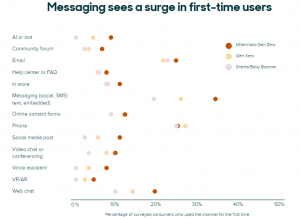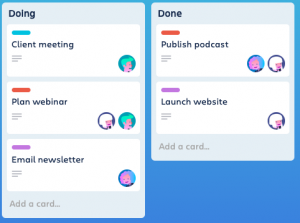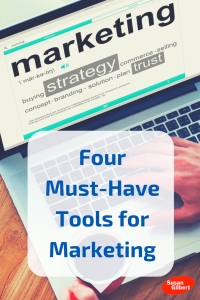We’re getting toward the bottom of the recruitment marketing toolbox and this, I think is my very favourite tool, mostly because it’s also the easiest one to pull off. All employers will have terrible reviews on sites like Glassdoor and Indeed. It’s just a fact.
Just as marketers know that consumer reviews will not always be all goodness and light, recruiters and executives have to accept that sometimes they drop the ball and give someone a lousy experience, and sometimes, despite all good intentions and efforts, a lousy experience is had anyway. The trick is what you do about it.
We know that more than 70% of candidates look at employer reviews and a third won’t even apply if scores are less than three stars. Once they’re engaged with you, they’ll read an average of six reviews before deciding whether to stay in your talent funnel. This is why we need to take these things seriously, and I offer these five bits of advice.
Actually read employee reviews
An astonishing number of employers don’t read their online reviews. Or they read them only now and again, usually after a really bad one has come to light. So why, given the importance of a strong employer brand and the very competitive recruiting market, wouldn’t they stay on top of this?
Probably because it’s not anyone’s job. Perhaps it’s one of those things the recruiting team is supposed to do in their spare time? Maybe it’s at the bottom of some intern’s to-do list. The point is, an actual human needs to go into the review sites at least a couple of times a week, depending on your traffic, and actually read what people are saying. Might I suggest you cut and paste the reviews into a regularly submitted report, so there’s no excuse for skipping the discussion.
Respond to reviews authentically
There are plenty of terrific guides, like this one from Entrepreneur for how to respond to negative reviews, so I’ll spare you that advice, but I will repeat rule number one and that is please don’t cut and paste some terrible thing like: “Thanks for your feedback! The team is reviewing your comments.” No, they aren’t. If that’s the response then I’m going to suggest the very last thing the team is doing is reviewing the comments. We know this because every single review on that page has the same stupid canned response. How insulting.
While I think a few guidelines for how to respond, and some good templates are a fine starting point, what we need here is authenticity. Some will go far enough to suggest that executives respond to reviews. If you want to stick your CEO’s name at the end of the review, be my guest, but I’m not really sure that’s their job, and there are plenty of CEOs out there who should not be responding. Period. Ever. Like this guy.
An authentic response needn’t be long, but it should demonstrate that someone read and understood the review (yes, even if it’s awesome) and has taken the time to say thank you, acknowledge the main points and, if necessary, say what specific things are likely to happen as a result of having read and understood the review. I think if we approach this as we would an in-person conversation, then we are fairly likely to get it right. According to Glassdoor 62% of candidates have an improved perception of the employer after seeing a response.
But what if it’s horrific? What if the review is all about toxic workplaces, bullying bosses, non-functional toilets and regressive policies? Do we really want a rehash of those points just to demonstrate you’ve understood? Probably not. What’s called for here is a genuine display of alarm and an email or phone number that person can use to have an offline conversation. The point of the offline conversation is not so much to stop them from saying awful things (that ship sailed) but to understand why they said them and to make the changes necessary to stop other people from saying them.
Third, view these reviews as the gift-wrapped employee experience insights that they are. By doing some basic analysis on them (and some of these platforms offer good reporting to get you started), you can pick out patterns. Good patterns, like locations or roles that are particularly well regarded, and nasty patterns that may suggest you have a broader problem.
One client I work with doesn’t have the fancy package with the recruiting site that gives them reporting, so we just cut and paste all their reviews into a word cloud application and see what pops up. We found a few strong themes that way and now use those as the areas they benchmark in their regular employee feedback. We also took a lot of the positive themes and worked them into the recruitment marketing narrative because we had evidence to support the assertions we were making.
Ask for happy employee reviews
An obvious solution to crappy reviews is to counter them with good reviews. In fact, in particularly crappy companies, it’s not unusual to see a poor review immediately followed by a slew of great reviews. Possibly it’s loyal Tigger employees standing up against the downer malcontents, but in my experience, it’s a panicking executive trying to game the star-ratings back into a good place. Not cool.
That said, there is nothing wrong with asking employees and ex-employees to share their views. There is the risk they’ll share stuff you don’t want to read (but should read anyway, see #2 above), but there is the greater probability that they will say nice things. I’d focus on standard inflection points such as the end of onboarding, one, five and ten-year anniversaries or retirements. As part of your general acknowledgment of a milestone, why not include a polite request to share their experience or journey with the world on one of these sites. Don’t attach any reward, don’t badger them, just ask. If one in twenty people actually go do it, you’ll have some terrific social proof of how awesome it is to work there.
I hope that as a result of the milestones above you can identify a few employees who are really, really happy. Even if they don’t write you a lovely review, and since they’re supposed to be anonymous, you can’t really know, you could pull them aside for a good old-fashioned testimonial. In my view, these are your secret weapon against poor ratings.
Counter bad reviews with awesome testimonials
We know candidates will check out your website, which is great because it’s one of a very few places in the recruitment marketing cycle you totally control (the other is the job posting). This means you can counter all that negativity with your own positivity, and nothing is more authentic than real employee testimonials all over your site. You want video clips, you want little quotations, you want success stories. All of those real people telling other real people that yours is a fantastic place to spend a third of their lives is way more powerful than a bunch of grumpy anonymous people saying ugly things. According to LinkedIn, your employees have three times the credibility of your company for candidates.
It doesn’t need to be complicated. I did a one-year campaign where each month we invited to employees to comment, in writing or 30-second video, on one, tiny thing about work. So we’d ask things like: What is the best part of your workday? How long have you been with the company? How do you give back at work? What are your tips for working remotely? What advice do you have for new employees?
Each month we’d get a handful of decent replies and then we’d ask if we could use their comments for recruiting materials (we just used first names and titles outside the company). About half said yes, and as an inducement we donated $ 50 to a charity of their choice, which in turn helped us get their colleagues to create content the next month.
We’ll wrap up our look at the Recruitment Marketing Toolbox next time with how to keep in touch with top talent.
Business & Finance Articles on Business 2 Community
(53)






